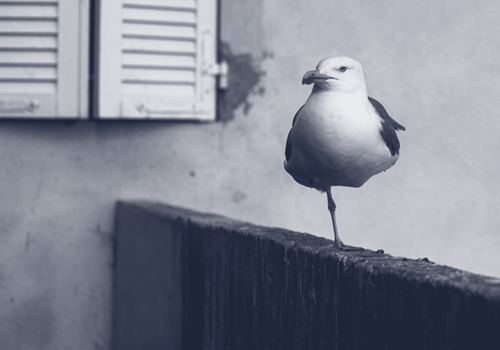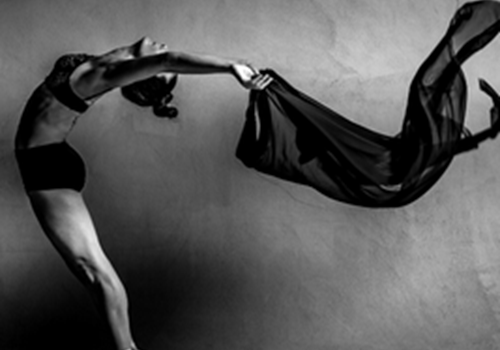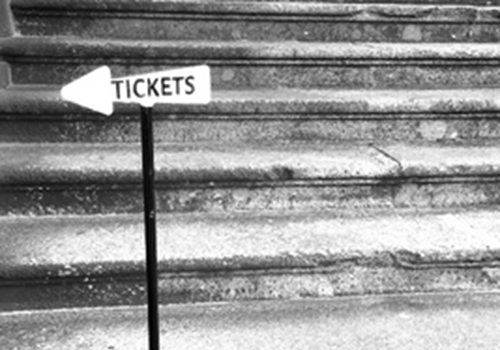Van Gogh, Frameless, Hockney…
Immersive experience has arrived with a vengeance and over the last decade has secured a sizeable presence in the culture sector.
But changing the way the world experiences stories is not a new phenomenon.
The birth of jerky, moving pictures, the voice of Al Jolson heralding the arrival of the talkies, Dorothy walking from a black and white farmhouse into a multicoloured Oz… each evolved the way we looked at things.
Let’s note, the stories didn’t change... we simply evolved how we presented them.
Certainly, its accelerated arrival couldn’t have happened at a more advantageous time. As the Serpentine's artistic director shared in a recent article, ‘after two years of intermittent social isolation, events that invite sensual immersion in the company of others, have a renewed appeal'.
So, through a lack of socially experiencing each other, during a worldwide lockdown, all we needed now was a fix … and an immersive experience could be it!
The varied definitions of Immersive support this theory - immersive is the perception of being totally surrounded by, or in a state of emotional immersion… with both of these creating a measurably high degree of engagement.
In entertainment, this is the prize, the gift of delivering a lasting experience. So little surprise that the gold rush then truly began.
The French painters enjoyed the first wave, with no less than four separate Van Gogh immersive experiences touring the states at the same time.
Mel and I were in contact with the American producer of the initial Van Gogh experience, piloting in Toronto just as Covid hit. He immediately re-structured the building as a ‘drive through’… to now enjoy in the safe isolation of your car! Responding beautifully to the new reality, he didn’t change the art, he simply adjusted HOW to share it.
Meanwhile, the art critics were not always as supportive in their observations ’The popularity of these immersive exhibitions has led to an explosion of fairly empty, populist experiences from commercial operators, while traditional museums have struggled to strike a balance.'
Well, not necessarily true. Over the years museums haven’t been strangers to ’finding balance’. They’ve often been at the forefront of evolving how they present their stories, to retain their livelihood.
At all times they protect the historic or cultural integrity - but they liberally adjust how it's presented.
The celebrated Van Gogh Museum itself launched ‘Meet Vincent Van Gogh’, as ’the one and only official experience’. Their museum director clarified that the museum’s offering was ‘totally different’ , defining that, unlike its flashy and not so cerebral predecessors, it was designed to be ‘a complete experience, in which education and entertainment, go hand in hand’. But why would a thriving museum in Amsterdam, with around 2.2m visitors a year, need to do this?
The director explained 'it's important for the museum to broaden its sources of income… and in doing this we are generating income in a new way’.
NOT new work… but simply adjusting to a new way of presenting the same preciously protected material. With the demand for culture now growing outside of the major cities and the key historic works becoming too fragile to travel, new agile ways of looking at things are now swiftly emerging.
In France, the cultural ministry is rolling out an ambitious project to introduce 1000 ‘digital museums’ around the country. The Louvre itself is now collaborating to stage an immersive digital light show, inspired by Leonardo da Vinci’s Mona Lisa!
The technical arrival of immersive presentation was a measurable shift to the current reality in this sector… some critics may say disruptive. Yet visually and at all times, the original creative stayed intact, stayed true to itself… in every case, it was simply translated or interpreted in a new way, an immersive way.
Later this month, the BBC is about to launch their immersive Planet Earth… same planet, same creatures, same Attenborough, indeed great care is taken to protect every piece of that.
Similarly, an ‘immersive’ production of Guys and Dolls is about to open at London’s Bridge Theatre… same songs, same characters, same story, but now ‘reconsidering the role of the spectator’ and possibly attracting a younger audience, those with experience of going to clubs and festivals.
The difference in both examples is simply HOW they’ve adjusted to seize the opportunity in this current reality. So finally let’s sense check this belief at London’s latest immersive spectacular, 'David Hockney- bigger and closer’… delivered in a giant lightbox, about the size of a tennis court in Kings Cross.
This immersive experience plunges us deep inside our most popular living artist, an artist with his own stained-glass window in Westminster Abbey no less!
Here, Mr Hockney's activity and warm commentary endorses this, as he openly confirms his view to all "there’s an awful lot of ways at looking at things… I want to keep discovering fresh vibrant ways of seeing'.
When you strip everything back - immersive, at this moment at least, is a good example of the sector evolving… appealing to audiences in new and innovative ways - led by the art; embracing advances in production and technology, protecting and progressing ’the arts’ in ways that extend its legacy for current and future generations and opening up revenue streams to ensure funding for the sector and further contributions to our economies
There will always be 'an awful lot of ways of looking at things', influenced by whatever the world offers… as either a challenge or an opportunity. ‘A groundswell of work that asks questions about what theatre can be'. But the core must always stay true… whether it's a piece of perfect writing, a precious painting, a compelling theme from a show.
The words won’t change, the colours and shapes stay untouched, every note in the melody is secure. The skill is acknowledging the reality and adjusting HOW you deal with it, as a challenge or, as with immersive, an opportunity to seize.
This theory is no different for you as an individual, a leader, your team, or an organisation.
Finding who you are, what you do and why you do it… and holding that intact.
Then, finding new ways of looking at things is simply adjusting HOW you respond, to survive, to succeed and very much to successfully take things forward.
With all the creative talent that exists across the Arts, this sector should be the very best at finding new ways to both look at, do things and move forward… it’s all about balance. Click here to read more
The culture sector is uniquely skilled in reimagining how art is made, who makes it and how it’s experienced … so, is Immersive simply another way of looking at things or something totally different?

We’re a small, tight team of experienced consultants, who have helped leaders and organisations through the best and the worst of the past thirty years.

We help you create balance - the ability to adjust your position relative to the world around you, so you can survive, succeed and keep moving forward.

Where we share our client stories from the past 30 years.

Sales and Ticketing teams are designed to sell tickets. So, when life shifts overnight to refunds & new dates, it’s a business model re-think. But… it still all starts with a ticket